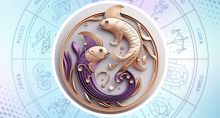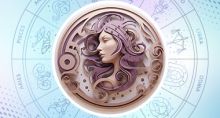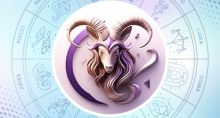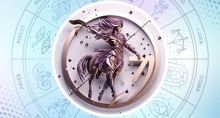The Symbolism of Different Objects Held by Ganesha
Ganesha, the elephant-headed deity of Hinduism, is rich in symbolism. Representations of Ganesha show him holding many objects, each of which has a deeper meaning than what is apparent.
Let us see what these objects are and what they symbolize.
-
Modak – Lord Ganesha’s favorite sweet, it represents wisdom.
-
Shankh/Conch –The loud sound made by blowing the conch is like an elephant’s trumpeting. It has the power to ward off negative thoughts.
-
Pasha/Noose – It represents his ability to bring his devotees closer to him and prevent them from going astray.
-
Vajra Shool/Lighting Bolt – It is the power that controls the higher and lower chakras. It gives the spirit control over the mind and gives the mind control over matter.
-
Chakra – The discus or chakra represents the Sun and mind. Used as a weapon, it is the divinely empowered intellect.
-
Modakapatra or bowl of sweets – It is a symbol of what He loves most, which is Moksha or liberation, the sweetest of all things.
-
Gada or mace – It eliminates the karma of his devotees.
-
Dagger – The churi or dagger signifies the difficult path the spiritual aspirant must walk.
-
Rudraksha Mala – Lord Ganesha sits at Shiva’s feet with a japa mala or prayer beads in his hand, waiting for instruction from his father, the Supreme Lord.
-
Flower arrows – They prevent his devotees from wandering too far from the path of Dharma.
-
Amrita Kumbha/ Pot of nectar –It represents the nectar that flows from the devotee's Sahasrara chakra to his seat at the base of the Muladhara chakra.
-
Padma/ Lotus – Ganesha wants devotees to be like the lotus flower, pure despite being surrounded by mud.
-
Ikshukarmuka/ Sugarcane bow – Ganesha is generous nature and gives many good things to devotees. His sugar cane bow shoots the kindest arrows, which represent his thoughts.
-
Shara/arrow – It teaches us to begin all undertakings with good intentions.
-
Veena – Ganesha is the sound, and Shiva is the ocean; Shiva is the mind, and Ganesha is the echo. A true devotee should listen to the music of the veena within himself.
-
Asura/the demon – Ganesha’s ganas eliminate fear from the minds of his devotees.
-
Danda/staff – It represents the authority of Ganesha. It warns people not to violate Dharma.
-
Camara/fly whisk fan – It whisks away the memory of the past from the minds of his devotees.
-
Kamandala/water pot – It represents fullness. Ganesha meets all his devotees’ needs. The kamandalu keeps pouring out and never needs to be filled.
-
Dhanush/bow – Ganesha bends His thoughts into forms that are most helpful to his devotees.
-
Naga /serpent – It represents the kundalini power within all human beings, which can be aroused through yogic meditation.
-
Salipallava/rice sprig – Ganesha sustains the life of all people. He holds the sprig of paddy and ensures prosperity.
-
Mudgara/hammer – Ganesha’s mallet signifies that he is the Patron of Arts and Crafts and protects all artists and artisans.
-
Shastra/books –Ganesha edits all the Scriptures.
-
Kalpavriksha/wish-fulfilling tree – Ganesha has the power to gratify all the wishes of his devotees.
-
Parashavadha/battle axe – Ganesha can take strong measures to fulfill a righteous goal. The battleaxe is his mind force.
-
Mahaparashu/large axe – It can frighten asuras and ward off the malicious thoughts of those who wish to harm his devotees..
-
Trishul/trident – It represents his three-fold power – love, wisdom, and action.
-
Nariyal/coconut – It symbolizes the ego, soft and sweet inside, but hard and rough outside. By breaking a coconut to him, we break our ego’s hold on us.
-
Dhwaja/flag – This symbol draws his devotees toward him,
-
Bhagnadanta/broken tusk – As Vyasa’s scribe, Ganesha broke off his right tusk to use it as a stylus when taking dictation. It teaches us that we must finish what we start.
-
Pasanadharana (the pick axe) – Ganesha knows that trials await all people. To respond to prayers, he must pick away the mental dross.
-
Agni/ fire – It represents his fiery powers that can consume our dross and destroy our residual karmas.
-
Khadga/sword –His sword, inlaid with precious gems, warns those who respond only to fear of his enmity to crime and his dislike of hurting..
-
Phala/fruits –Ganesha enjoys all the Earth’s life-sustaining fruits. He wants everyone to stay healthy by consuming fruits.
-
Mulaka/radish –Ganesha loves the simple radish. He wants us to grow food that is good for us.
-
Kheaka/shield – It represents his power to defend the lands of the upright, to preserve traditions, and to protect all souls that are on the spiritual path..
-
Amra/mango – It was given to Ganesha by Shiva. It represents spiritual fruition.
-
Trtiyakshi/third eye – It symbolizes the highest spiritual vision that enables him to see reality.
-
Ratnakumbha/pot of gems – Precious gems are like human souls, each with a different color, beauty, and value.
-
Garitrah/grains – Ganesha protects all the grains that nourish all living beings.
-
Ikshukanda/Sugarcane – It represents the sweetness of life due to his blessings.
-
Madhu Kumbha/pot of honey – It represents the sweetness of Moksha.
-
Kadali phala/banana – To see the reality, the covering of ignorance must be removed.
-
Yoga Dhanda/meditation staff – It represents the importance of meditation.
-
Trina/ Kusha and Durva grasses - There are different kinds of animals, small and big. Each needs a special environment and food, so he protects grasses, small flowers, and seeds.
-
Sesame ball –Nothing is too small to be overlooked. Ganesha has a sweet made of tiny sesame seeds in his trunk, and his mount is a tiny mouse.
-
Shuka/parrot – It represents the importance of good speech.
-
Ananasa/pineapple – The outer covering may be rough, but what is inside is sweet.
-
Mushaka/mouse – It represents the all-pervasiveness of Ganesha. The mouse, his mount, can carry him into the mind’s every nook and cranny.
-
Swastika/mark of auspiciousness – It signifies good fortune, auspiciousness, and luck. Its crooked arms also show how life is filled with changes.
-
Om – The form of Ganesha is like the primordial sound, Om.
-
Sunda/elephant trunk –Ganesha has a versatile trunk. It represents his capacity to love His devotees. He uses it to reach out to them.
-
Nilapadma/blue water lily – Ganesha sits by a lily pond, pondering the current state of the universe. His duty is to ensure that all is in order until the next Great Dissolution or Mahapralaya.
-
Panashaphalam/jackfruit – Ganesha’s favorite is the jackfruit. It signifies that our attachments are strong, despite being small, like the jackfruit’s stem.
-
Prabhavali/fiery arch – It signifies creation, preservation, and fiery dissolution. Ganesha sits within it. Above it dwells Mahakala, the God of time.
-
Dalimb/pomegranate – People can be led astray by worldly people who eat flesh. Ganesha offers red dadimas as if to say that seeds are better than flesh.
-
Nagapasha/snake– W should be like Him and control our animal mind.
-
Kapittham/wood apple – The outer covering of the wood apple is rough, but inside there is powerful medicine.
-
Laddoo – It represents the sweetness of life.
-
Kavacha/armor – Ganesha is the protector of his devotees.
-
Shashikala/crescent moon – It represents the passing of time and the powers of the mind.
-
Gam Mantra – Devotees use it to invoke him. On hearing it, he responds instantly.
-
Yajnopavita/sacred thread –It reminds us that anyone can be twice born through His grace.
-
Jambuphalam/rose apple – It represents the path of health, love, and purity.
-
Payasam/sweet pudding –Milk, sugar, and rice combine to make the sweet. In life, we should find balance by combining different aspects of life.
-
Shakti/consort –Ganesha’s 2 consorts represent ida and pingala nadis, emotion and intellect, or Siddhi and Buddhi.
-
Muladhara Chakra – Ganesha rules memory and knowledge by sitting on the four-petaled Muladhara chakra. He is the gatekeeper to the 6 chakras above and the guard of the 7 below.
-
Vriksha/trees – They represent the power of plants and nature to cure all ailments.
-
Peacock/peacock feather – The peacock’s blue color symbolizes infinity.



















